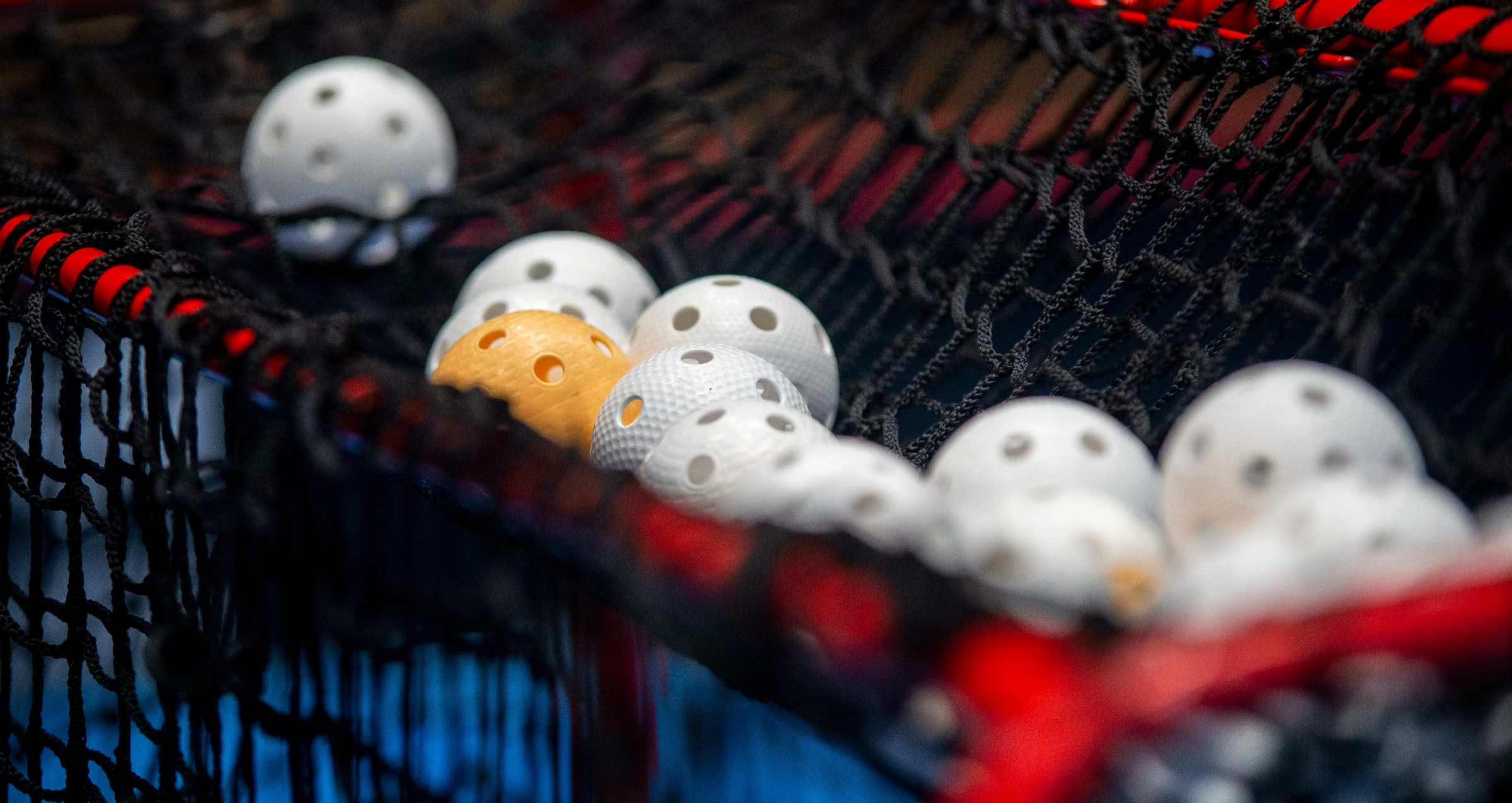Blog
how do you keep track of score in pickleball

Title: Navigating the Numbers: Mastering Scorekeeping in Pickleball
Introduction:
In the vibrant world of pickleball, were the paddle meets the court in a delightful dance of agility and strategy, one element stands out as both essential and frequently enough perplexing—the score. Whether you’re a seasoned player or just dipping your toes into this rapidly growing sport,understanding how to keep track of points is crucial for an enjoyable and competitive experience. Unlike other racquet sports, pickleball has its own unique scoring system, blending tradition with a modern twist that can leave newcomers scratching their heads.In this article, we’ll delve into the fundamentals of scorekeeping—unraveling the rules, strategies, and tips to ensure you never lose track of the game again. Join us as we explore this vital aspect of pickleball, empowering you to focus on what truly matters: enjoying the game and competing with confidence.
Table of Contents
- Understanding the Basics of Pickleball Scoring
- The Different Scoring Systems Explained
- Essential Tools for Scorekeeping During Matches
- Tips for keeping Accurate Score in Fast-Paced Games
- Common Scoring Mistakes and How to Avoid Them
- enhancing Your Game Experience with Creative Scorekeeping Techniques
- Q&A
- To Conclude
Understanding the Basics of Pickleball Scoring
In pickleball, scoring can initially seem daunting, especially for new players. Though, it is indeed divided into two main types: traditional scoring and rally scoring.In traditional scoring, only the serving team can score points, while the receiving team can only win the right to serve. Each player or team takes turns serving, and scoring occurs when the opposing team fails to return the ball within the lines of the court. Understandably, this differs from rally scoring, where points can be earned by any team nonetheless of who served. This basic distinction is critical to grasping how games are played and points are accrued.
When keeping track of the score, players announce it in a specific order, which can help everyone stay informed about the ongoing game. The correct format for announcing the score is: the serving team’s score, followed by the receiving team’s score, and finally the server number. For example, if the serving team has 3 points, the receiving team has 2 points, and it’s the first server, they would say, “3-2-1.” This system maintains clarity and ensures that all players are on the same page regarding the score, making dialogue and fair play easier during the match.
| Scoring Type | Who Can Score? | Points Example |
|---|---|---|
| Traditional Scoring | Only the serving team | 3-2-1 |
| Rally Scoring | Both teams | 4-3-1 |
In addition to learning about scoring types, players should also familiarize themselves with game formats and how many points are typically required to win a game. Most games are played to 11 points,and a team must lead by at least 2 points to secure the victory. Some formats may extend to 15 or even 21 points, depending on the level of competition and agreement between players. It’s crucial to clarify these details before starting a match, as they greatly influence gameplay strategies and stamina management.
The Different Scoring Systems explained
In the realm of pickleball, understanding the various scoring systems is crucial for both players and spectators. The most common system utilized in competitive play is known as Rally Scoring. In this method, a point is scored on every rally, regardless of which team served. This means that every single serve offers the opportunity to gain a point, enhancing the pace of the game and ensuring that matches can wrap up more quickly. Moreover, Rally Scoring helps to eliminate any prolonged scoring droughts, making it easier to maintain audience engagement.
Another scoring option is the traditional Side Out Scoring, where points can only be earned by the serving team. In this format, if the receiving team wins the rally, they do not score; instead, they earn the right to serve. This system was more prevalent in the earlier days of pickleball but is less common in modern play. While some might find the strategic element more intriguing in this format, it does tend to lead to longer matches, as points are not scored as frequently.
| Scoring System | Points Scored | Game Duration |
|---|---|---|
| Rally Scoring | Every rally | Typically shorter |
| Side out Scoring | only by the serving team | Generally longer |
Along with these main scoring systems, variations such as Timed Matches and Limited Serve systems can also be employed, depending on the specific tournament rules or casual play preferences. Timed matches can add a sense of urgency, requiring teams to maximize their points within a set time limit, while implementing a limited number of serves per player offers a unique spin on traditional scoring. Regardless of the format chosen, understanding these scoring systems can greatly enhance the enjoyment of pickleball, aligning players’ strategies with their scoring opportunities.
Essential Tools for Scorekeeping during Matches
When it comes to keeping track of scores in pickleball, having the right tools can make all the difference. First and foremost, a scoreboard is essential for visual clarity during matches. Whether it’s a handheld version or a more permanent setup, it allows players and spectators to easily monitor the game’s progression. Look for options that are easy to read from a distance and can accommodate multiple games, especially in tournaments where multiple matches are taking place together.
Another indispensable tool is a scorekeeping app. With the rise of technology in sports, various applications have been designed specifically for tracking scores in pickleball. These apps not only let you keep scores but also enable you to record player statistics, track timeouts, and even observe match history. Some popular options include:
- Pickleball Score keeper - A straightforward interface that focuses purely on score tracking.
- Paddle Tracker - Offers advanced metrics and match analytics.
- JustPlay – A extensive tool for managing tournaments.
For those who prefer the traditional method of scorekeeping, a scorekeeping sheet or a whiteboard can be highly effective. This method not only provides a tactile element to score tracking but also promotes team communication. With a simple table setup as shown below, players can usually keep the data organized and legible:
| Player/Team | Score | Game |
|---|---|---|
| Team A | 15 | 1 |
| Team B | 10 | 1 |
Tips for Keeping Accurate Score in Fast-Paced Games
Fast-paced games like pickleball can create an exhilarating atmosphere, but keeping track of the score can be a challenge amid the excitement.To maintain accurate scoring, consider these strategies that can simplify the process and keep the game flowing smoothly:
- Use Visual Aids: Setting up a scoreboard or using designated scorekeeping equipment can definately help players focus on the game without losing track of points. Visibility is key, so ensure everyone can see the current score.
- Designate a Scorekeeper: Assign one player from each team to be the official scorekeeper. this reduces confusion as all scoring responsibilities fall to one person at a time, allowing others to concentrate on playing.
Along with physical scorekeeping methods, effective communication is vital for maintaining the score accurately. Align on key terms and signals before the game begins to ensure everyone understands when to update the score. Consider these helpful tips:
| Communication Tips | Example |
|---|---|
| pre-Game Discussion | Review scoring rules and terms. |
| Consistent Updates | Announce scores after each point. |
| Visible Hand signals | Use hand signs to indicate scoring changes. |
developing a rhythm in how you announce and record the score can play a crucial role in accuracy. Establish a routine to call out the score clearly and consistently, aiming for a format that provides context. For instance, when calling out the score, always state the server’s score first. This way, players quickly orient themselves without hesitation:
- Server’s Score First: “Five serving three” gives a structured approach to communication.
- Regular score Checks: At intervals, make it a habit to confirm the current score with all players, ensuring everyone remains on the same page.
Common Scoring Mistakes and How to Avoid Them
Misunderstanding the scoring system in pickleball can lead to frustrating game experiences. One common mistake is failing to recognize the difference between the serving and receiving team’s scores. Players frequently enough get confused when announcing points. It’s crucial to always state the server’s score first,followed by the receiver’s score. To avoid this pitfall, consider using a scoring sheet or a scoreboard that highlights which team is serving and the current score, ensuring all players stay on the same page.
Another frequent error occurs when players forget to adjust their score after winning a rally. In pickleball, the score must be updated after every point, but sometimes players remain focused on the next serve and neglect to announce or record the new score. To counteract this mistake, players can adopt the habit of verbalizing the updated score before each serve. This not only confirms that everyone is in agreement but also builds a routine that helps prevent errors. Setting up a pre-game agreement about scorekeeping responsibilities can further help maintain clarity throughout the match.
Lastly, inaccuracies can arise due to unfamiliarity with the rules governing scoring changes when a player switches sides. Some players might forget that they must announce and reset the score if a game reaches 11 points or changes sides during a time-out. To mitigate confusion, create a simple reference chart that outlines when to announce the score and any applicable rule changes. Here’s a brief example of such a chart:
| Situation | Action Required |
|---|---|
| Before Serving | Announce Player’s score |
| After Winning a Rally | Update the Score |
| Switching Sides | Record the Score and Adjust Queue |
Enhancing Your Game Experience with Creative Scorekeeping Techniques
Keeping track of the score in pickleball can be both a necessity and an art form. Embracing creative techniques can elevate the scorekeeping experience and add a layer of excitement to your games. Consider using a scoreboard board or a chalkboard to publicly display the score, allowing players and spectators alike to relish in the tense moments of the match as they see the scores climb. You can even enhance this by using different colors for each team, making it visually appealing and fun.
Another engaging method is incorporating scorekeeping games or challenges into your matches. For instance, award points not just for winning but for achieving specific goals, such as hitting certain types of shots or executing triumphant serves. You could track these points on a shared digital platform or a simple table, where you assign points based on various achievements. Here’s an illustrative example:
| Achievement | Points Awarded |
|---|---|
| Winning a Rally | 1 Point |
| Getting an Ace | 2 Points |
| Executing a perfect Drop Shot | 3 Points |
Lastly, you might consider integrating mobile apps or scorekeeping gadgets designed specifically for sports like pickleball. These tools often come equipped with features that help you track not just the score, but also player statistics and match records. Imagine being able to share live updates through social media directly from your scorekeeping app! This not only fosters a sense of community but also enhances engagement among players and fans, as they can follow along with the excitement in real-time.
Q&A
Q&A: Keeping Score in Pickleball
Q: What is the basic scoring system in pickleball?
A: In pickleball,the game is typically played to 11 points,but players must win by at least two points. This means that if the score reaches 10-10, a player must continue to play untill one player leads by two points. This creates a thrilling finish, as players battle not just to reach 11, but to secure that crucial additional point!
Q: Are there different scoring methods in pickleball?
A: Yes! The most common method is called ‘rally scoring,’ where points can be scored by either the serving or receiving team. Another method, frequently enough used in recreational play, is ‘side-out scoring,’ where only the serving team can score points. Though, as the sport has evolved, rally scoring has become the standard in many tournaments.
Q: How do you keep track of who serves?
A: To keep the game organized, the serving team rotates through the players. In a doubles match, each player on the serving team serves once until they lose a point. It’s crucial that players are aware of whom to serve next — usually, the server’s partner will announce the score and the server’s name in a clear manner prior to each serve for clarity.
Q: What is the role of the score in keeping the game fair?
A: The score acts as a guiding star for both teams. By keeping track of points, players know exactly what they need to do to win, and it ensures that everyone is on the same page regarding the current state of the game. Miscommunication about the score can lead to confusion, so players often repeat the score before serving.
Q: Can you provide some tips for beginners on how to keep score?
A: Certainly! Start by familiarizing yourself with the score format: always announce the server’s score first, followed by the receiver’s score, like this: “7-5.” Keep a small notebook or use a scoreboard app to jot down scores if needed, especially in friendly matches. Most importantly, communicate with your partner and your opponents to ensure all parties are on the same page.
Q: What happens if there’s a mistake in the score?
A: Mistakes can happen and can frequently enough lead to confusion.If a score dispute arises, it’s best to pause the game and calmly discuss the situation. If there are witnesses, involve them in the discussion. The key is to maintain a friendly atmosphere — after all, pickleball is about enjoying the game!
Q: are there any special considerations for tournament play?
A: In tournaments, it’s crucial to be vigilant about the score. Many players use court-assist technology or even scorekeepers to maintain accuracy. Make sure to review the specific tournament rules regarding scoring before the match — these can vary depending on the event.
Q: How does keeping score affect the strategy of the game?
A: Keeping a close eye on the score can greatly influence game strategy. Knowing when your team is close to winning can boost confidence, while a team trailing by a important margin may need to take more risks. Being mindful of the score helps players adapt their tactics, whether they need to play conservatively or take bold chances.
Q: how does scorekeeping contribute to the overall experience of playing pickleball?
A: Scorekeeping becomes a rhythm in the game — each announcement heightens anticipation and adds to the energy on the court. It creates a shared experience among players, fostering camaraderie and light-hearted competition. Ultimately, it helps ensure everyone is engaged and enjoying every moment of the match!
to Conclude
As we wrap up our exploration of scoring in pickleball, it becomes clear that the elegance of this game lies not just in its spirited rallies and swift volleys, but also in the simplicity and precision of its scoring system. Whether you’re a seasoned player or a newcomer eager to join the fun, keeping track of the score is essential to enjoying every moment on the court. Remember to familiarize yourself with the basic rules, maintain open communication with your partner, and embrace the flow of the game.
as you step onto the court equipped with these scoring strategies, you’ll find that the satisfaction of accurately keeping score enhances your overall pickleball experience. So next time you hear “15-0” or “Game point,” you’ll be ready not just to play, but to thrive in the dynamic world of pickleball.here’s to countless games, perfect scores, and the camaraderie that comes with every match! Happy playing!











